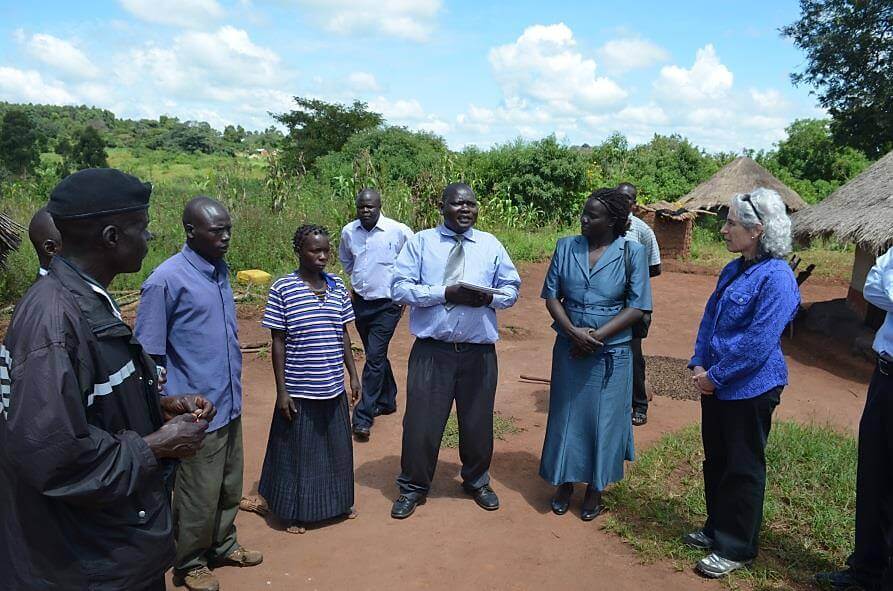Beth BellUS Centers for Diseases Control and Prevention
Dr. Beth Bell is Director of the National Center for Emerging and Zoonotic Infectious Diseases at the US Centers for Disease Control and Prevention.
In this guest post, Dr. Beth P. Bell, director of the National Center for Emerging and Zoonotic Infectious Diseases (NCEZID) at the Centers for Disease Control and Prevention (CDC), describes some of her center’s active engagement in global health work. She also highlights an important technology initiative called Advanced Molecular Detection that is proposed in the President’s fiscal year (FY) 2014 budget. This is the first in a four-part series about NCEZID’s global activities focused on the prevention of illnesses and death from infectious diseases.
I am pleased to write this inaugural blog from NCEZID for the Global Health Technologies Coalition. We work closely with other CDC centers, federal agencies, and domestic and international partners to protect people from infectious diseases and enhance global health security.
We’re excited to have the opportunity to showcase our portfolio of global activities that evidence NCEZID’s research, technology, and program priorities. One example is our work in Uganda, where we helped build laboratories and train staff at the Uganda Virus Research Institute (UVRI). The main UVRI facility is based in Entebbe in central Uganda, and it has a satellite laboratory about 320 miles northwest in the town of Arua, near the border with the Democratic Republic of the Congo (DRC). NCEZID staff based at UVRI in Entebbe collaborates with other UVRI scientists to deliver in-country expertise in diagnosing and preventing viral hemorrhagic fevers, plague, and other infectious diseases.
For instance, UVRI staff last year used modern diagnostic technologies while working closely with Atlanta-based CDC response teams, local public health authorities, and other experts to contain four near-simultaneous outbreaks of filovirus disease (caused by Ebola and Marburg viruses) in Uganda and the DRC. Separately, I learned first-hand about the benefit of building local diagnostic capacity in Uganda when I traveled there last fall and spoke with scientists and residents about the successful use of a new plague dipstick test (more on this in our next guest blog).
 In October 2012, Dr. Bell (far right) visited Uganda and met a farmer (third from left) who had developed symptoms of plague. He was promptly tested with the plague dipstick test and learned within 15 minutes that he had tested positive for plague. He was treated with antibiotics,fully recovered, and was back working in 3 days. Also pictured is Ugandan clinical coordinator Dr. Titus Apangu (center, wearing a tie). Photo credit: NCEZID
In October 2012, Dr. Bell (far right) visited Uganda and met a farmer (third from left) who had developed symptoms of plague. He was promptly tested with the plague dipstick test and learned within 15 minutes that he had tested positive for plague. He was treated with antibiotics,fully recovered, and was back working in 3 days. Also pictured is Ugandan clinical coordinator Dr. Titus Apangu (center, wearing a tie). Photo credit: NCEZID
Other examples of NCEZID’s commitment to using innovative technology in response to infectious diseases on the global front include our efforts to develop vaccines for dengue and Rift Valley fever, and to establish safe water projects in places like Malawi and Haiti. And in just the past few months, we’ve helped with a Japanese encephalitis immunization campaign in western Cambodia (with support from the Bill & Melinda Gates Foundation) and assisted India in the development of a pilot outbreak investigation and surveillance for enteric diseases in several states.
But as we anticipate new and evolving global challenges in infectious disease, we also recognize the need to strengthen our capacity in using next-generation public health tools. This step is crucial if we are to successfully confront what CDC Director Dr. Tom Frieden calls the “perfect storm of vulnerability: emerging microbes, resistant microbes that outsmart the drugs used to treat them, globalization of travel and trade, and the greater ease of making deadly organisms in a laboratory.”
Of particular importance is the need to implement new approaches for strengthening our expertise and capacity in molecular-based sequencing and bioinformatics and applying these advances to public health—both domestically and internationally. Real-time genomic sequencing of pathogens rapidly generates massive amounts of information, and bioinformatics helps us interpret these data and apply the results to public health. To be sure, CDC and its public health partners have had some success with the global application of genetic sequencing and molecular epidemiology—the global polio eradication effort being one example. But much more remains to be done. Advances in these evolving areas will help us to more rapidly and accurately diagnose infectious diseases, investigate and control outbreaks, understand transmission patterns, determine antimicrobial resistance, and develop and target prevention measures, including vaccines.
The President’s FY 2014 budget contains an initiative called the “Advanced Molecular Detection (AMD) and Response to Infectious Disease Outbreaks,” which would provide CDC an unprecedented opportunity to build our expertise across all infectious diseases. This initiative can help us move beyond older methods of detecting a microbe and determining its threat to human health. Strengthening our detection and response capabilities with these technologies will help us take bold new steps in protecting the public’s health, both here and abroad. You can read more about the AMD initiative on CDC’s website (see link below).
In our next three guest blog posts for Breakthroughs, we intend to show you how technology enables us to extend our reach of work around the globe. For example, one of our scientists who developed the plague dipstick will give a first-hand account of creating this tool that diagnoses plague easily, rapidly, and inexpensively. Other blogs will detail recent efforts to combat rabies in Haiti and the ever-growing challenge of controlling the spread of dengue. I hope you enjoy reading them.
For more information about the AMD initiative, click here
To learn more about NCEZID, click here